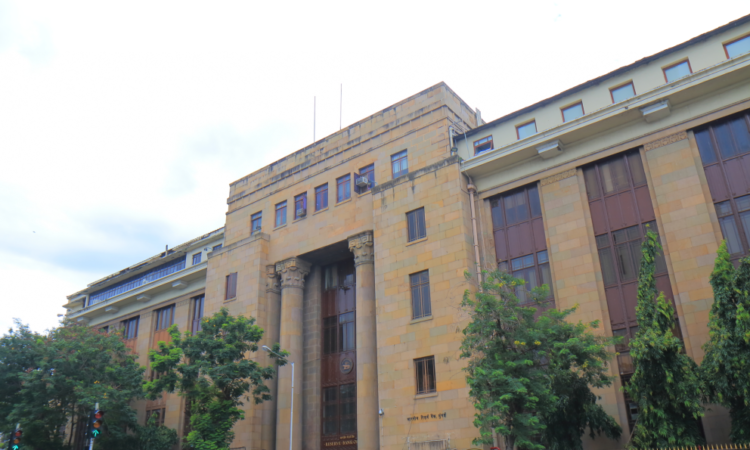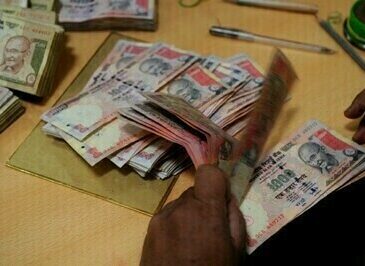
202
 By Prof. Dr. M. Jayadev, Professor of Finance and Accounting, Indian Institute of Management Bangalore (IIMB)
By Prof. Dr. M. Jayadev, Professor of Finance and Accounting, Indian Institute of Management Bangalore (IIMB)
Asian markets have discussed the need for other currencies as viable alternatives to the US dollar for some time. The “Joint Statement of the BRICS Ministers of Foreign Affairs and International Relations” released after the meeting of the foreign ministers of BRICS (Brazil, Russia, India, China and South Africa) in Cape Town, South Africa, on June 1, 2023,1 underscored the importance of encouraging the use of local currencies in international trade and financial transactions among BRICS members as well as with their trading partners. In fact, the need for alternate currencies has been emphasized by the International Monetary Fund (IMF) for a while2. The IMF has identified the Indian rupee (INR) as a potential international currency alongside China’s RMB (renminbi). In 2016, China’s RMB was included in the IMF’s Special Drawing Rights (SDRs) basket. Recently, the IMF raised the RMB’s weightage to 12.28 percent.
Being an accepted international currency would mean the Indian rupee is freely used in transactions by residents and non-residents and as a reserve currency for global trade. All export and import transactions (current transactions) would be invoiced in Indian rupees. It would also be used to facilitate capital-account transactions. The C. Zhang (2014)3 model showed that welfare is unambiguously higher for a country when its currency is accepted abroad. The benefits of the internationalization of the Indian rupee derive from both seigniorage gains from foreigners and the expansion of trade opportunities.
On July 5, 2023, the Reserve Bank of India’s (RBI)’s Inter-Departmental Group (IDG) presented a roadmap for internationalizing India’s currency4. Approximately a week before the RBI’s report was released, Dr. Y. V. Reddy, a former governor of the RBI, also articulated his views on the Indian rupee as an international currency and suggested required policy changes.
The rupee as a reserve currency
India moved toward partial convertibility in the late 1990s and made subsequent progress with multiple reforms. India has also enabled capital-account transactions, such as permitting corporate entities to raise resources through external commercial borrowings and Masala bonds (rupee-denominated bonds issued by Indian entities outside India).
The significance of the rupee for international-trade settlement gained more attention with the RBI’s scheme of July 2022, permitting rupee settlement of external trade by creating a more comprehensive framework, including the flexibility of investing surplus rupees in Indian bond markets5. Following this, in December 2022, India pioneered its first settlement of foreign trade in rupees with Russia as part of the International Trade Settlement in Indian Rupees (INR) mechanism initiated by the Reserve Bank of India. This milestone transaction is slated to save dollar outflows estimated at $30 billion on crude-oil imports.
The benefits are clear, and not only from a strategic point of view. Invoicing and settlement of international-trade transactions in Indian rupees with oil-exporting countries or countries with which India has trade deficits will lead to reductions in India’s current account deficit (CAD) and reduce the burden of maintaining large foreign-exchange reserves.
The RBI permitted banks from 22 countries to open Special Vostro Rupee Accounts (SVRAs) for settling payments in Indian rupees. According to India’s Minister of External Affairs (state) Rajkumar Ranjan Singhs reply to the Parliament of India’s questions on July 21, 2023, these countries are Bangladesh, Belarus, Botswana, Fiji, Germany, Guyana, Israel, Kazakhstan, Kenya, the Maldives, Malaysia, Mauritius, Myanmar, New Zealand, Oman, Russia, Seychelles, Singapore, Sri Lanka, Tanzania, Uganda and the United Kingdom. This action will help Indian traders make payments in rupees for all imports, which will be credited to Vostro accounts (special rupee accounts in Indian banks) of the corresponding banks of the partner countries, while Indian exporters will be paid from the balances in the designated Vostro accounts. Any surplus rupee balances in Vostro accounts may be used for investments, including Government of India securities.
An agreement was signed between India and Iran to undertake eligible trade transactions using the Indian rupee. In terms of the existing Arrangement for Bilateral Trade Payments between India and Iran (2018), the Indian rupee Vostro accounts of Iranian banks are credited 100 percent in Indian rupees by Indian importers against invoices payable for the supply of goods and services from entities in Iran, without the requirement of any additional certification or authorization. Other countries, such as Cuba and Luxembourg, are also interested in rupee-based trade settlements. India is largely a net importer, and the value of the Indian rupee against the dollar has been declining historically.
In August 2022, Sri Lanka also made Indian Rupee a designated foreign currency, facilitating Indian rupee-based bilateral trade between Sri Lanka and India.
The Indian rupee is accepted to some extent in Singapore, Malaysia, Indonesia, Hong Kong, Sri Lanka, the United Arab Emirates (UAE), Kuwait, Oman, Qatar and the United Kingdom, among others. It is a legal tender in Nepal and Bhutan. The central banks of Nepal, Bhutan and Malaysia also hold Government of India securities and Treasury bills. Some sovereigns, such as Singapore, hold Indian equity and bond assets (including G-secs) through their sovereign wealth funds6.
Bilateral swap arrangements (BSAs)
India currently has a bilateral swap arrangement (BSA) with Japan for up to US$75 billion as a backstop line of support in case of any balance-of-payments issues. The RBI also provides liquidity to the South Asian Association for Regional Cooperation (SAARC) countries under the SAARC swap framework. Under the SAARC swap agreement, the requesting central bank can withdraw in US dollars, euros and Indian rupees. Bilateral currency swap arrangements may provide blueprints for reducing dependence on the US dollar for settling trade transactions, leading to exchange-rate stability and minimizing liquidity mismatches. As stated in the IDG report, India needs a standardized approach and must be prepared to engage with interested central banks for local-currency settlements, swaps and line of credit (LCs).
GIFT City
India established its first International Financial Services Centre (IFSC), Gujarat International Finance Tec-City (GIFT City), with a vision to provide all the financial services, markets and transactions relating to India currently completed outside of the country. GIFT-IFSC has the potential to develop as a competitor to International Financial Services Centres for rupee products and, more specifically, rupee derivatives, as exchange-traded rupee derivatives are among the most-traded contracts globally.
The rupee as a payment currency
India’s centralized payment systems, such as real-time gross settlement (RTGS) and National Electronic Funds Transfer (NEFT), have gained significance in global payment systems. The new payment architecture, Unified Payments Interface (UPI), evolved as the widely accepted last-mile connection in the domestic market, enabling every Indian citizen to complete remittances.
Further, the RBI, in collaboration with the National Payments Corporation of India (NPCI), is reaching out to jurisdictions to increase the global outreach of the UPI system to facilitate cross-border transactions, including remittances. Linkages between fast-payment systems across jurisdictions can enhance cross-border payment arrangements and ensure faster remittances. As stated in the IDG report, the RBI also selected a “cross-border payments” theme in the second cohort under its regulatory sandbox initiative to spur innovations capable of recasting the cross-border payments landscape. The cohort sought to leverage new technologies for low-cost, secure, convenient, fast and transparent cross-border payment mechanisms. To ensure continuous innovation, the RBI announced in September 2022 that the second cohort on “cross-border payments” was open for “on-tap” applications.
The RBI launched the Indo-Nepal Remittance Facility Scheme in 2008, extending an option for cross-border remittances by leveraging India’s National Electronic Funds Transfer ecosystem. Citizens of Nepal working in India can transfer funds to beneficiaries in Nepal, which will be credited in Nepal’s currency.
A new development enables faster remittances between India and Singapore. India’s retail payment system, Unified Payments Interface, and Singapore’s equivalent network, PayNow, were integrated on February 21, 2023. This linkage will allow users from both countries to access faster and more cost-efficient cross-border remittances. Similarly, on July 15, 2023, the RBI released a statement stating that India and the United Arab Emirates (UAE) signed a memorandum of understanding (MoU) to set up a framework to strengthen the use of local currencies for cross-border transactions. This MoU aims to implement a Local Currency Settlement System (LCSS) to promote the use of the Indian rupee and AED (UAE dirham) bilaterally. The MoU covers all current-account transactions and permitted capital-account transactions.
The broader objective the IDG envisages is that, as the payment system is leveraged for cross-border trade transactions, this will ultimately enable the development of an Indian Clearing System (ICS) along similar lines.
The RBI is also actively considering expanding the Structured Financial Messaging System (SFMS) framework to provide the domestic payment-system platform to other jurisdictions. The suggested SFMS-based RTGS platform model provides infrastructure for cross-border payments. This could provide fast, convenient, and cost-effective direct-payment channels with other jurisdictions.
The Asian Clearing Union (ACU) proposed using the local currencies of its members for settling ACU transactions, thus mooting the idea of the Indian rupee being included as one of the settlement currencies under the ACU. The proposed expansion of the ACU would further this process by encompassing more countries, increasing the geographical reach of the ACU mechanism. If India has trade surpluses with other ACU countries, it will acquire the currencies of those other countries, which may be deployed in the financial markets of the respective countries.
All this may not challenge the dollar’s dominance, but India’s growing geopolitical leverage and prospective economic growth, as projected by several international agencies (Goldman Sachs, the Japan Center for Economic Research [JCEP]), will certainly make the Indian rupee an accepted international currency in the years to come. In 1971, Susan Strange7 coined the notion of a “negotiated currency”.
References
1 The Diplomatic Insight: “Joint Statement of BRICS Foreign Ministers Meeting 2023,” June 3, 2023.
2 International Monetary Fund (IMF): “Internationalization of Emerging Market Currencies: A Balance Between Risks and Rewards,” Faisal Ahmed, Shengzu Wang, Isabelle Mateos y Lago, Samar Maziad, Stephanie Segal, Pascal Farahmand and Ubaibir S. Das, October 19, 2011, IMF Staff Discussion Note.
3 Journal of International Economics: “An information-based theory of international currency,” Cathy Zhang, July 2014, Volume 93, Issue 2, Pages 286-301.
4 Reserve Bank of India (RBI): “Report of the Inter-Departmental Group (IDG) on Internationalisation of INR,” July 5, 2023.
5 Reserve Bank of India (RBI): “International Trade Settlement in Indian Rupees (INR),” RBI/2022-2023/90 A.P. (DIR Series) Circular No. 10, July 11, 2022.
6 Reserve Bank of India (RBI): “Report of the Inter-Departmental Group (IDG) on Internationalisation of INR,” July 5, 2023.
7 World Politics: “The Politics of International Currencies,” Susan Strange, January 1971, Vol. 23, No. 2, Pages 215-231, Cambridge University Press.
ABOUT THE AUTHOR
Prof. Dr. M. Jayadev is a Professor of Finance and Accounting at the Indian Institute of Management Bangalore (IIMB). His professional services have extended to the Basel Accords and banking and risk management for several banks. He is an Associate Member of the Indian Institute of Bankers (IIB) (or Indian Institute of Banking and Finance, IIBF) and a recipient of the Indian Council of Social Science Research (ICSSR) and University Grants Commission (UGC) Fellowships. He is the Shareholder Director of Union Bank of India (UBI).


